Sometimes even the common species put on quite the show for the photographer.
The wild Mallard is the source of all domestic ducks except the Muscovy and is the most abundant duck species in North America. As common as they are I all to often ignore them with my lens and I shouldn’t – especially when it comes to behaviors. These birds were photographed a week ago at Willow Pond.
In my area spring behaviors have begun in many species and Mallards are no exception. I was photographing other birds when I noticed this mated pair begin their mating ritual. First the male dipped his bill to his mate…
and then she reciprocated. This occurred several times before…
the male mounted the female.
As is typical of many duck species during mating the male grasped the female by her upper neck feathers…
and held on for the duration.
When the act was completed the male dismounted. This is when things got really interesting…
Mallards are monogamous but paired males actively pursue forced extra-pair copulations which produces mixed paternity in broods. There are often other males in the vicinity and the mating process excites them to attempt to mate with the female too. That’s exactly what happened here.
As the male dismounted, the female noticed another male Mallard (this time a hybrid) rushing toward her just out of frame to the right – thus her look of surprise and alarm.
She apparently had no interest in dallying with him and made her escape.
So the hybrid turned around and directed his hostilities at the other male.
A vicious fight broke out between the two males.
It went on for some time but eventually the wild male got the upper hand (wing)…
so the hybrid turned tail and made his escape.
I’ve been doing some research on the mating patterns of Mallards and it’s very complex and convoluted (three types of copulation – pair copulation, forced extra-pair copulation and forced pair copulation). To be perfectly honest I’m not sure if the original two birds are a bonded mated pair or not but either way I thought the behavior was fascinating.
Ron


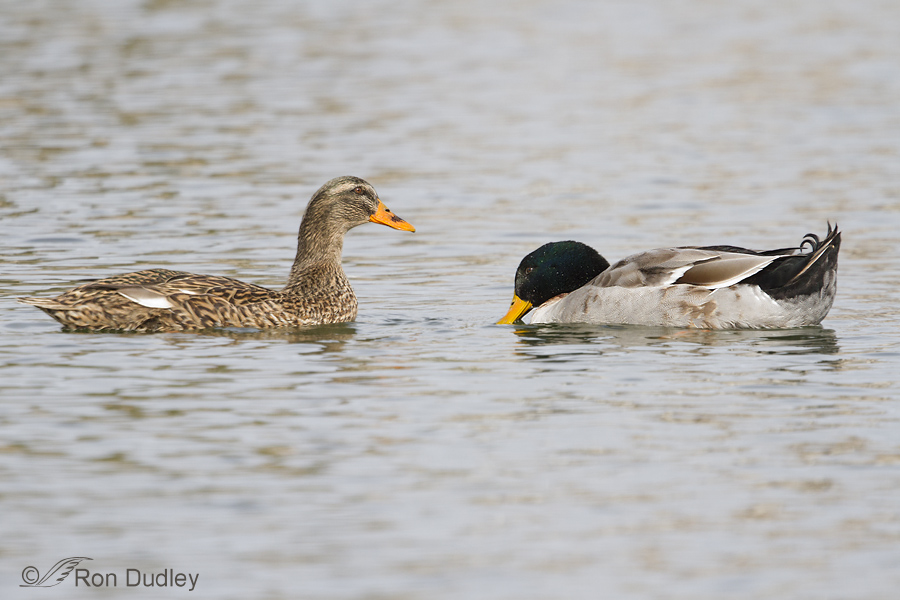
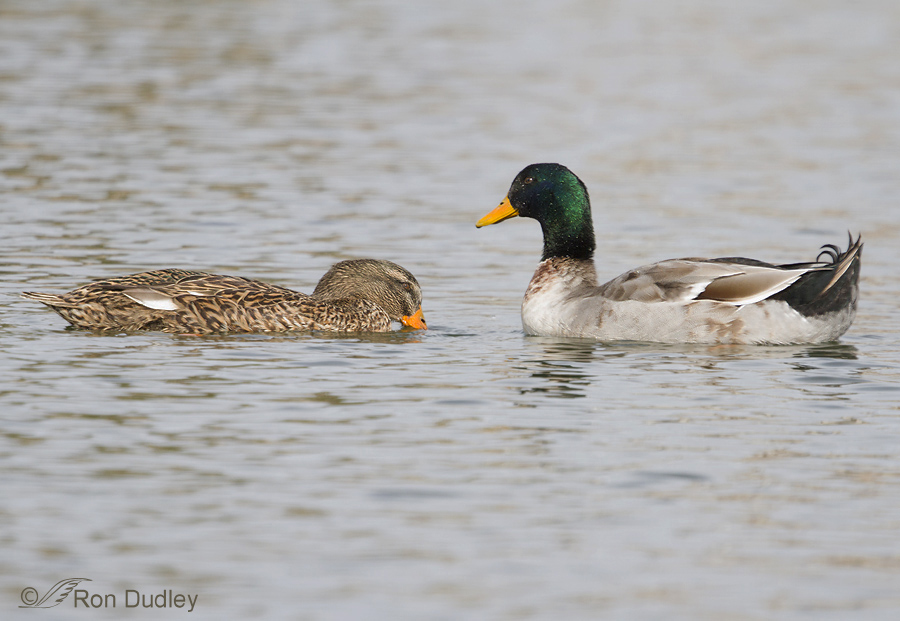
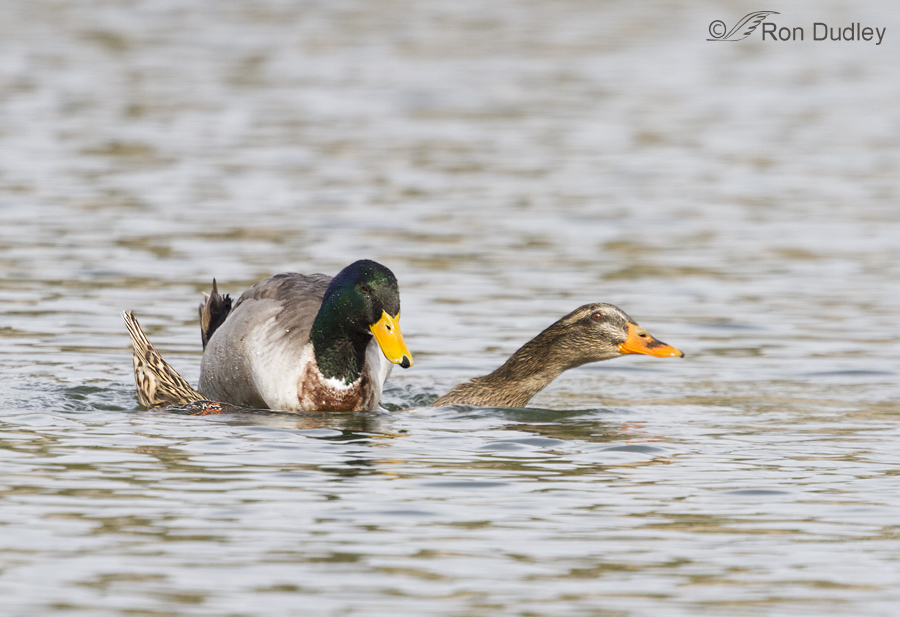
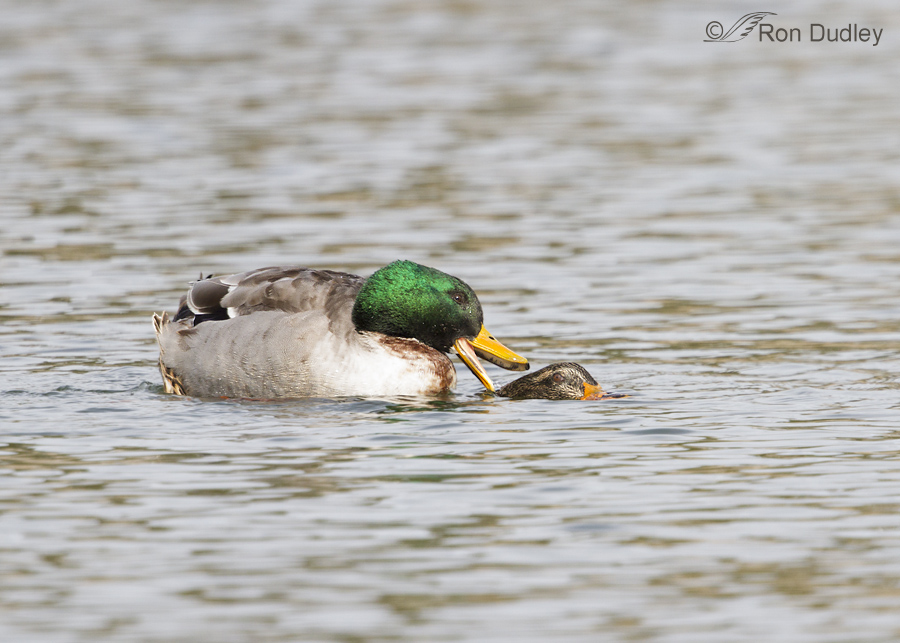
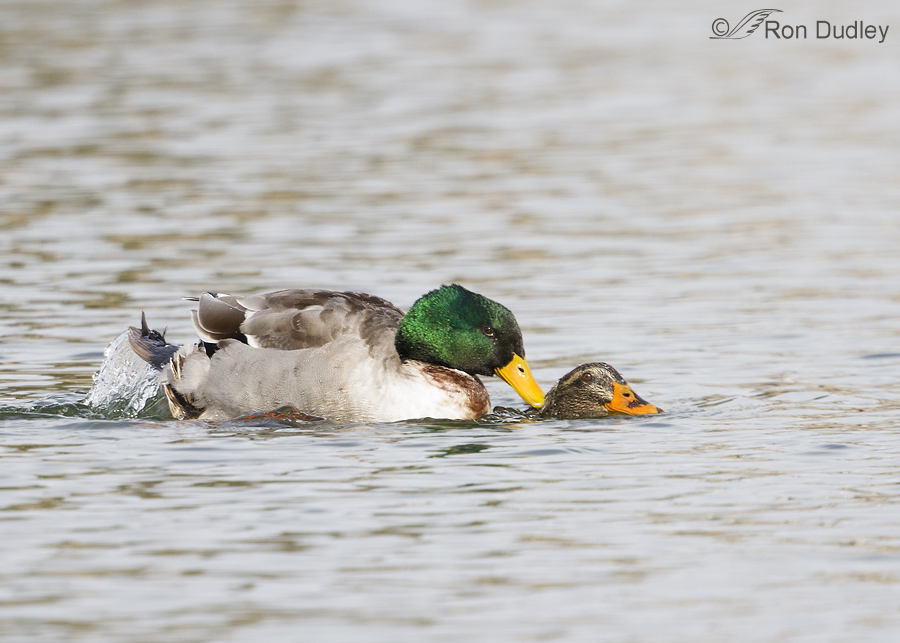
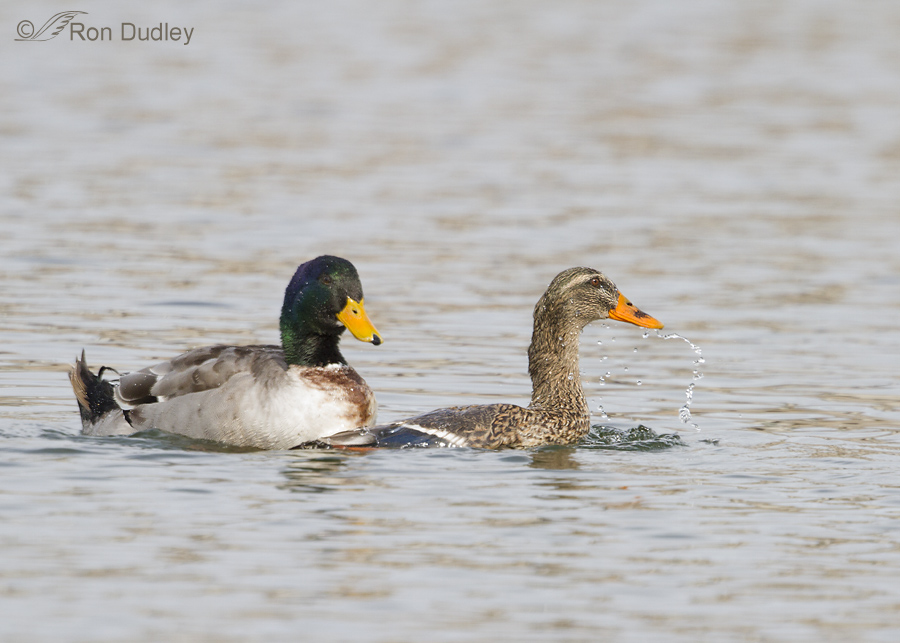
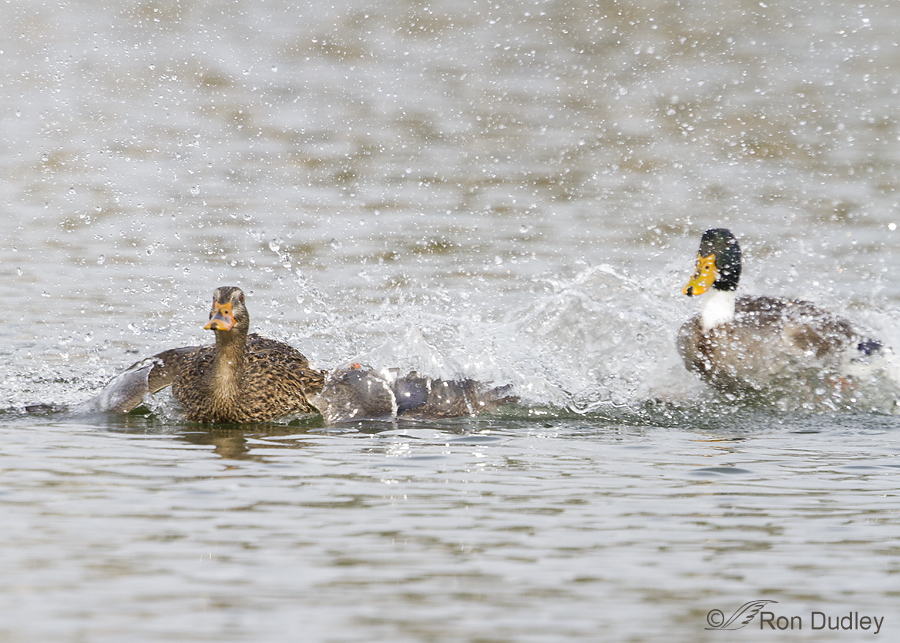
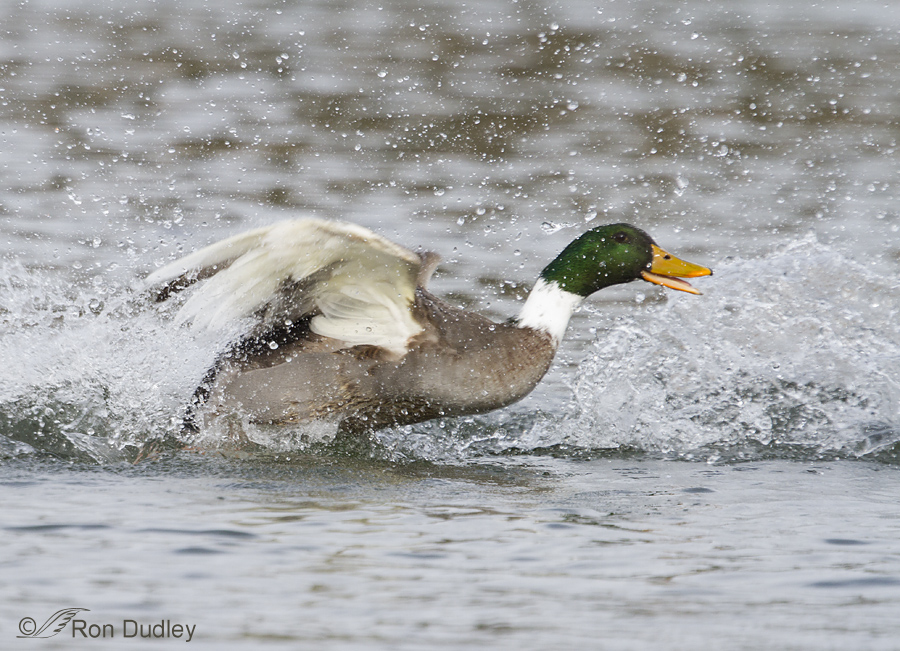
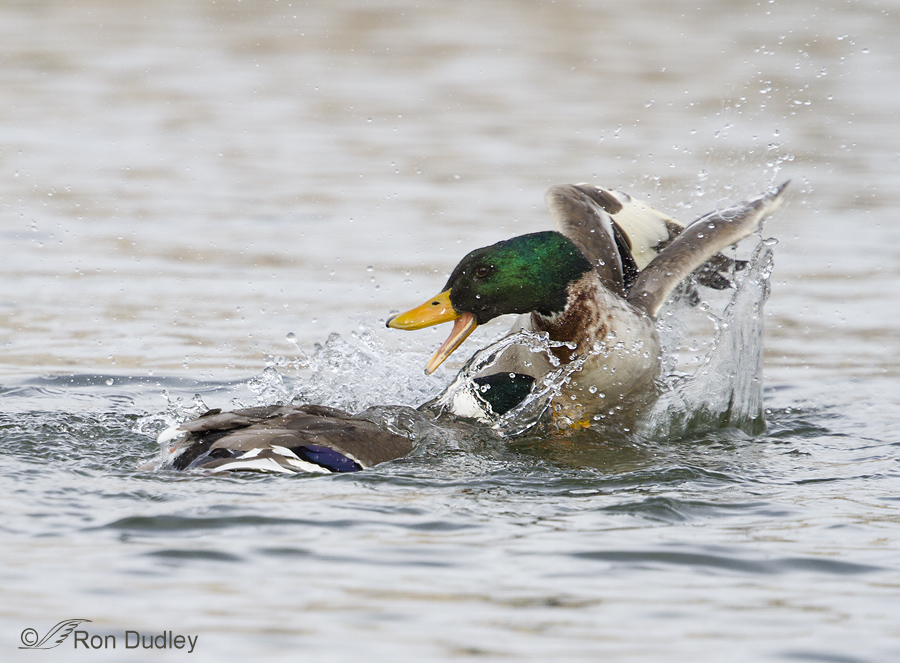
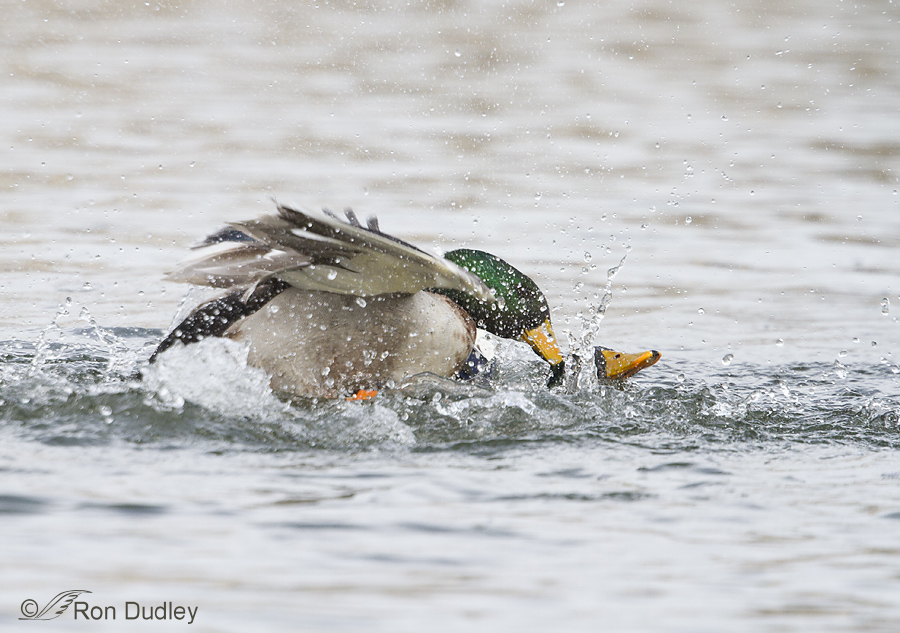
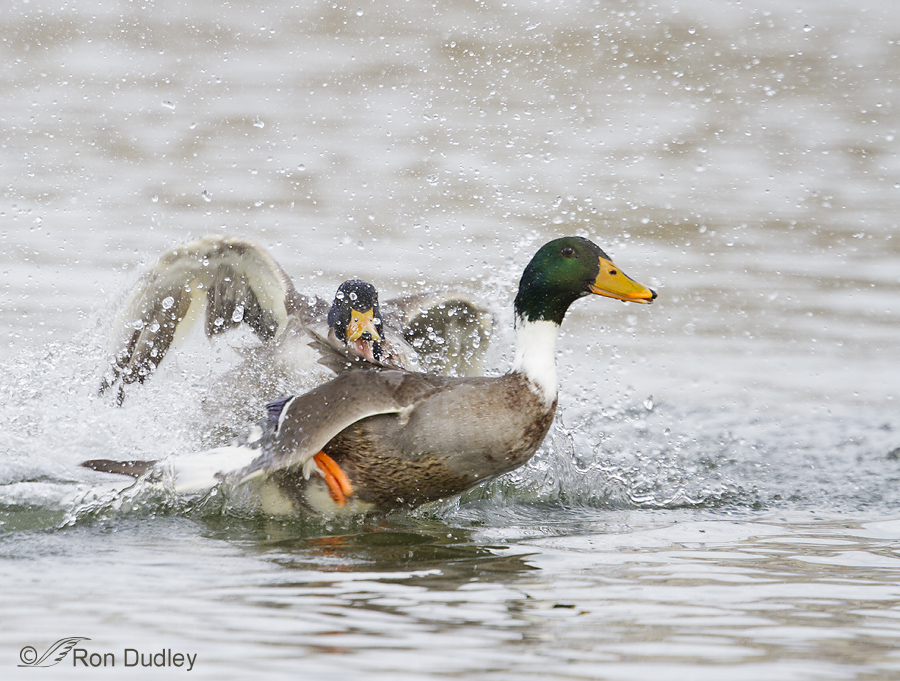
Oh, I am so disheartened to know there are regular female mortalities! I’ve witnessed the sparring and mating behavior you describe, but convinced myself that the outcome was generally benign. I wasn’t aware of the variations among mating patterns, thanks for the education on that. I’m sure I’m in synch with most women when I say that it’s never easy watching ducks engage this practice, where the female is forcefully submerged by one or more males.
I think this must be “war on women”…
Mote “funkin dunks”…!!! Once again, the ladies get screwed….
My anthromorphic self’s sympathies are ALL with the poor female. I know that some consider ‘death in the act’ to be the ultimate way to go, but I am not one of them. And drowning/near drowning is very, very unpleasant. And wasteful in circumstances like this. No gene pool is enriched when the female dies before breeding.
Wonderful sequence Ron. Thank you.
Sometimes one wonders how certain behaviors were ever selected for in the first place, don’t you think, Elephant’s Child?
At the local pond here in Flagstaff, forced extra-pair copulation seems to be more common than pair copulation – I’ve witnessed more fights (often while still copulating) than I’ve witnessed the bill-dipping ritual followed by pair copulation. It’s a small pond, maybe an acre or so and I wonder if the small pond size makes for more crowding and fighting. Does your research support this thought?
“I wonder if the small pond size makes for more crowding and fighting. Does your research support this thought?”
I think it does, Verm. That seems to be what is implied in this statement from BNA Online:
“Female mortalities during multi-male FEPC attempts occur annually in crowded urban populations, but also recorded in wild”
So interesting! I was quite shocked to hear of this behaviour from my parents who witnessed a ‘mallard gang rape’ while out on a walk near a local pond. Apparently one of the males held down the female while the other had his way.
I’m still not sure as to whether I was more shocked that this actually happens or that my sweet parents told me the story!
“Gang rape” pretty well describes it, Suze. Sometimes females are even killed during the process.
An interesting series well captured. I agree that we can learn a lot from the more common species if we take the time.
Thanks, Sonja.
What a story!! Did the original male get hurt or was he OK? Nature is just so amazing. Great captures of this entire drama!!
Ellen, both males came out of the encounter unscathed (though the hybrid’s ego may have been bruised…)
What a great storyline (and so very informative) to go with such great images….Thanks
Thank you, Bill.
What a drama! Pretty much hardwired into their instincts, I would guess… Yet totally compelling to each party in the moment. Thanks very much, Ron…
“Instinctively hardwired” describes it well, Alison. Thanks